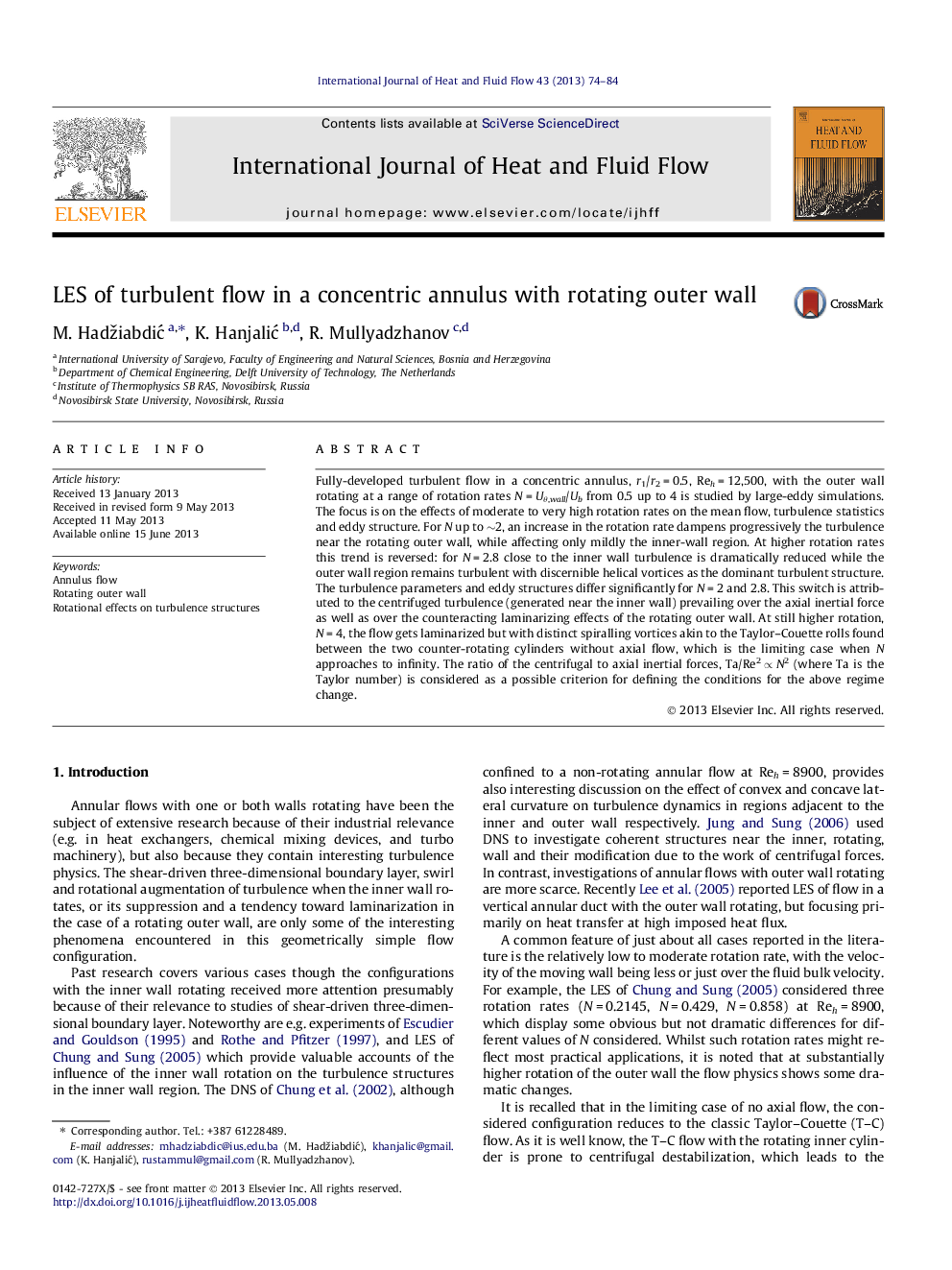| کد مقاله | کد نشریه | سال انتشار | مقاله انگلیسی | نسخه تمام متن |
|---|---|---|---|---|
| 655278 | 1457638 | 2013 | 11 صفحه PDF | دانلود رایگان |

• High rotation up to N = 2 dampens progressively the turbulence near the rotating outer wall.
• At 2 < N < 2.8 the trend is reversed: turbulence suppression is stronger near the stagnant inner wall.
• For N > 2.8, while tending to laminarize, the flow exhibits distinct Taylor-Couette vortical rolls.
Fully-developed turbulent flow in a concentric annulus, r1/r2 = 0.5, Reh = 12,500, with the outer wall rotating at a range of rotation rates N = Uθ,wall/Ub from 0.5 up to 4 is studied by large-eddy simulations. The focus is on the effects of moderate to very high rotation rates on the mean flow, turbulence statistics and eddy structure. For N up to ∼2, an increase in the rotation rate dampens progressively the turbulence near the rotating outer wall, while affecting only mildly the inner-wall region. At higher rotation rates this trend is reversed: for N = 2.8 close to the inner wall turbulence is dramatically reduced while the outer wall region remains turbulent with discernible helical vortices as the dominant turbulent structure. The turbulence parameters and eddy structures differ significantly for N = 2 and 2.8. This switch is attributed to the centrifuged turbulence (generated near the inner wall) prevailing over the axial inertial force as well as over the counteracting laminarizing effects of the rotating outer wall. At still higher rotation, N = 4, the flow gets laminarized but with distinct spiralling vortices akin to the Taylor–Couette rolls found between the two counter-rotating cylinders without axial flow, which is the limiting case when N approaches to infinity. The ratio of the centrifugal to axial inertial forces, Ta/Re2 ∝ N2 (where Ta is the Taylor number) is considered as a possible criterion for defining the conditions for the above regime change.
Journal: International Journal of Heat and Fluid Flow - Volume 43, October 2013, Pages 74–84